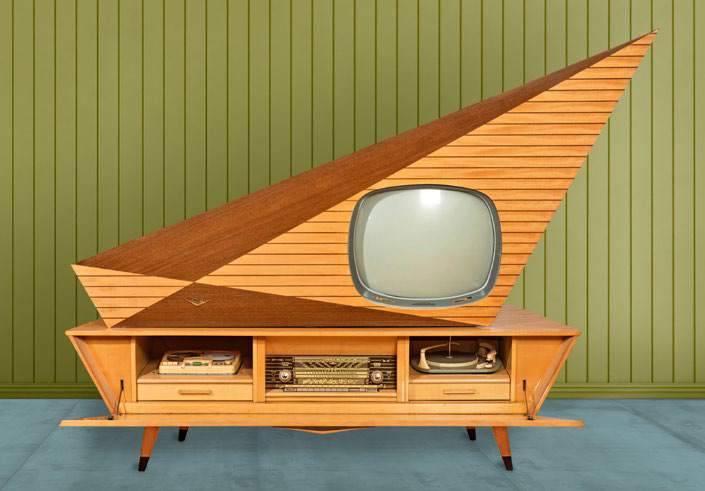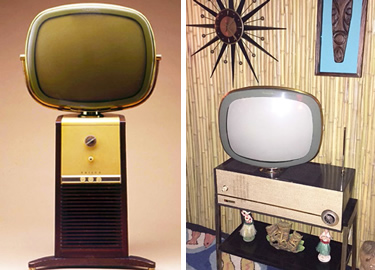Aura of the Era - Page 2
 |
 |
|
|
 |
|
|
 |
|
|
 |
|
|
TV was praised for "keeping people together at home…[as] husbands spend 42.8 percent more of their leisure time at home than they did before; wives 39.7 percent more; children 41.3 percent more," according to one 1950 study.
Some blamed TV for turning children into zombies. Others lauded TV for rendering children sedate.
TV may even have contributed to the postwar baby boom. "Before we got that TV set," one woman told a scholar at the time, "I thought my husband had forgotten how to neck."
TV certainly changed how America ate. Swanson debuted TV dinners in 1953 and soon was selling ten-plus million of them annually, including to the era's occupants of the White House, Ike and Mamie Eisenhower.
Today, a cottage industry of hobbyists, many of whom got into electronics as pre-teens, has sprung up across the country to restore vintage TVs. Many of their clients are mid-century modern fans.
Magnus Rubsam, whose Sacramento business Stellar Vintage Electronics of California converts vintage TVs into workable models that preserve their looks while functioning for today's viewers, says, "Modern [style] cabinets are much more valuable than traditional," so much so that he generally declines to buy sets with traditional looks.
Rubsam turns old sets that don't work into 'old' sets that do. He replaces dead picture tubes with unused or remanufactured ones, mostly from the 1990s and early 2000s. His 'converted sets' can handle Blu-ray, can be connected to cable or satellite dishes, and can play Amazon, Hulu, and the like, he says.
"I'm not just taking a new TV and putting it inside an old cabinet. I want it to be seamless," he says, saying that there are cheaper ways to use an old TV in a 1950s-period room.
"You can go to a thrift store and get an old TV, and put an LED [TV] in and make it look pretty good," Rubsam says. "But you can always tell when there is an LED behind an old TV."
Thanks to TV conversions and restorations, retro fans can avoid some of the heartache that comes with old TVs. As Steve McVoy, who runs the Early Television Foundation and Museum, warns, "Fifties sets have to be completely restored, and even then they're not reliable, because they weren't reliable in the '50s."
Yes, it's an odd and challenging field, TV collecting, and for several reasons.
First, there's this mystery—why are there so few truly stylish TV models from the 1950s and 1960s? "There are some cool models out there but, for the most part, their designs are generic," says McVoy, whose Ohio museum is America's largest dedicated to television hardware.
When it comes to TVs that have a modern vibe, people gravitate to the Philco Predicta, from the late 1950s and early 1960s. Rubsam, whose re-workings of these sets sell at GoogieTime, calls the Predicta "totally like George Jetson, a totally Space Age set."
Most Predictas have standalone screens—like giant eyeballs atop an artfully crafted cabinet. Tandem models allow owners to move the screen across the room from the cabinet. The Predicta 'Barber Pole' model looks like a one-eyed robot.
"They are the iconic 1950s TV set," Rubsam says.
David Weddington shares this admiration—not surprisingly, as his hobby is restoring and selling Predictas. He runs his enterprise, 50sPredicta.com, out of Murfreesboro, Tennessee. In 35 years, Weddington says he has worked on hundreds. "It was the first time the 'atom age' style was applied to television," he says.




